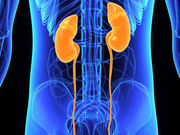Cumulative incidence of ESRD 4.6 percent during 30 years’ follow-up for those diagnosed at age 15 to 27
TUESDAY, Nov. 8, 2016 (HealthDay News) — Patients with type 1 diabetes diagnosed at age 15 to 27 years have low cumulative incidence of end-stage renal disease (ESRD) and increased mortality during long-term follow-up, according to a study published online Oct. 21 in Diabetes Care.
Vibeke Gagnum, from Oslo University Hospital in Norway, and colleagues examined the long-term mortality, causes of death, and ESRD in a population-based cohort study involving 719 patients with type 1 diabetes diagnosed at ages 15 to 27 years. Information on causes of death and whether ESRD was present was obtained from linkage to national registries.
The researchers found that 4.6 percent of participants developed ESRD and 20.6 percent died during 30 years of follow-up. Cumulative mortality was 6.0 percent at 10 years since diagnosis, 12.2 percent at 20 years, and 18.4 percent at 30 years. The standardized mortality ratio was 4.4. There was a mean of 23.6 years from diabetes diagnosis to ESRD. Causes of death included chronic complications (32.2 percent), acute complications (20.5 percent), violent death (19.9 percent), or any other cause (27.4 percent). In 15 percent of cases, death was related to alcohol.
“The cumulative incidence of ESRD was low in this cohort with type 1 diabetes followed for 30 years,” the authors write. “Mortality was 4.4 times that of the general population, and more than 50 percent of all deaths were caused by acute or chronic complications.”
Full Text (subscription or payment may be required)
Copyright © 2016 HealthDay. All rights reserved.








